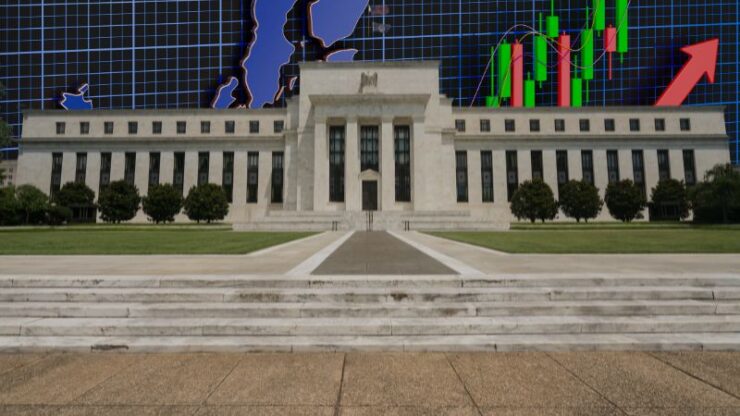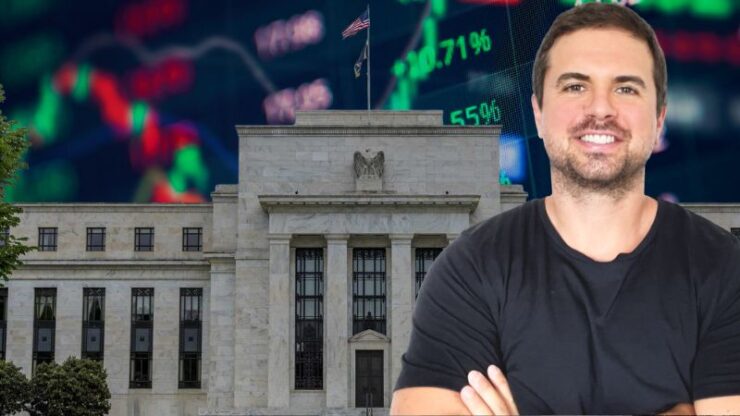In the episode of CoinRock Show, financial analyst Matthias issued a stark warning: if the Federal Reserve maintains its current monetary policy without adjusting interest rates, the stock market could face a significant downturn.
This perspective comes amid growing concerns about inflation, economic stability, and the Fed’s role in navigating these challenges.
The Federal Reserve’s Current Stance
As of December 2024, the Federal Reserve implemented a quarter-point interest rate cut, marking the third reduction within the year.
However, projections indicate a more conservative approach, with policymakers anticipating only two rate cuts in 2025, down from the previously expected four.
This shift reflects the Fed’s cautious stance in balancing economic growth with inflation control.

Market Reactions and Investor Sentiment
The Federal Reserve’s recent decisions have triggered notable reactions across financial markets, highlighting investor concerns about the direction of monetary policy.
Following the announcement of a quarter-point rate cut, the Dow Jones Industrial Average plunged over 1,100 points, marking its worst single-day drop since August.
Similarly, the Nasdaq Composite fell by 3.6%, and the S&P 500 declined by 2.9%, reflecting broader market anxiety.
The drop in stock prices was driven by the Fed’s signal that it plans to implement fewer rate cuts in 2025 than expected, reducing the likelihood of immediate relief for businesses and consumers.
This market volatility underscores investors’ sensitivity to the Fed’s policy signals. Historically, rate cuts have been seen as bullish, stimulating growth by making borrowing cheaper.
However, the Fed’s cautious approach—suggesting only two rate cuts in 2025 instead of the previously anticipated four—has led to concerns about a slower-than-expected economic recovery.
Bond yields surged, with the U.S. dollar reaching a two-year high, signaling uncertainty in global markets. The prospect of a less accommodative monetary environment has also raised alarms about the sustainability of current asset valuations.
Sectors like technology and real estate, which heavily rely on low-interest rates, faced significant losses.
Amazon, Tesla, and Nvidia saw stock price declines as investors reassessed their growth potential under tighter financial conditions.
As a result, concerns about a potential market correction are growing, with analysts warning that if economic growth slows and inflation remains persistent, further declines could follow in the coming months.
Matthias’ Call for Caution
Matthias emphasizes that the Federal Reserve’s cautious approach, while aimed at controlling inflation, may inadvertently set the stage for a market downturn.
He suggests that the lack of aggressive monetary easing could reduce liquidity in financial markets, making them more susceptible to shocks.
“The Fed’s reluctance to implement more substantial rate cuts could tighten financial conditions, increasing the risk of a market correction,” Matthias noted during the podcast.

The ‘Fed Put’ and Market Expectations
Historically, investors have relied on the “Fed put,” expecting the Federal Reserve to intervene to support markets during downturns.
This belief has often led to increased risk-taking, assuming the Fed would provide a safety net. However, the current environment suggests a potential shift away from this paradigm.
The term “Powell put” emerged during Jerome Powell’s tenure as Fed Chair, reflecting the market’s expectation of Fed intervention. However, recent actions indicate a more measured approach, focusing on inflation control over immediate market support.
Potential Implications for Investors
If the Federal Reserve maintains its current policy trajectory, several implications could arise for investors:
- Increased Market Volatility: The absence of anticipated rate cuts may lead to heightened volatility as markets adjust to a less accommodative monetary stance.
- Reevaluation of Asset Valuations: Stocks and other assets that have benefited from low-interest rates may face downward pressure as borrowing costs stabilize or increase.
- Shift Towards Defensive Investments: Investors might gravitate towards more conservative assets, such as bonds or dividend-paying stocks, to mitigate potential risks.
Navigating Uncertainty
Matthias’ warning is a crucial reminder of the delicate balance the Federal Reserve must maintain between fostering economic growth and controlling inflation.
For investors, this underscores the importance of staying informed and adopting strategies that account for potential market fluctuations.
As the economic landscape evolves, monitoring the Federal Reserve’s policy decisions and broader implications will be essential for making informed investment choices.





